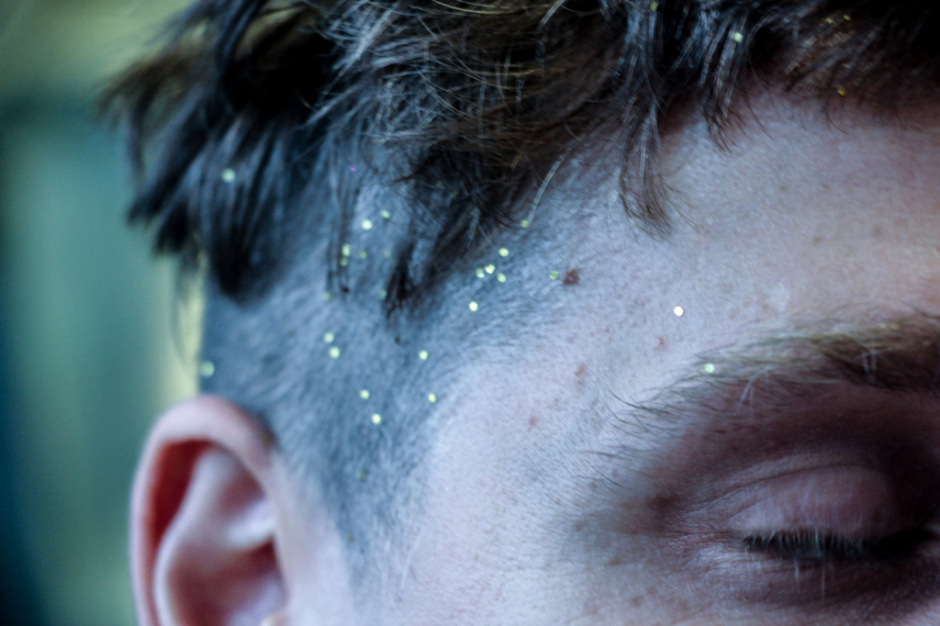Forest | HOME | January 24th, 2019
Created and performed by James Monaghan, Directed by Leentje Van de Cruys
I am an audience member. I don’t have to say anything.
This was a mental loop during James Monaghan’s performance of Forest that I repeated to remain present. It can be easy to tune out during uncomfortable encounters, which is exactly how I would describe the show. Embodied rules of theatre like the audience facing the same way in darkness, or remaining silent during a performance were stripped from Forest, making it difficult to ‘watch’.
Forest was performed in a blackbox space and admitted audiences made up of no more than thirty-five people. The chairs in the first row were covered so that we could deposit our bags and coats before we found a place to stand facing the centre, avoiding the large stalks of broccoli (yes, broccoli) that stood scattered on the floor. I had never really looked at broccoli closely before, but over the course of the hour I learned that when they’re lined up, some broccoli is resplendent, while other stalks can be hideous by comparison.
It is unusual to occupy the same physical space as a performer, and this was compounded by the feeling of looking into the well-lit faces of other audience members as the show unfolded. At the very beginning, James whispered something into the ear of one man in the audience before implying that he would like a hug. The man simply stood there, not giving in. We didn’t know whether we were ‘supposed’ to answer the questions James posed while making eye contact:
“What is your favourite flavour of ice cream?”
“Clotted cream. It’s a real flavour!”
“What is your guilty pleasure?”
“Madonna.”
“Fast or slow?”
“Both.”
Cues for audience members are deeply embedded into the architecture of a traditional play with darkened seats facing a well-lit stage. During Forest, we had to look at each other, and everyone seemed wary of being drawn into the unpredictable or embarrassing. But we all stood still until beckoned and stayed silent until called upon by James, who disguised his rehearsed ease well enough to make it seem unscripted at times. The couple of moments he sought my eye contact, the spark of recognition that accompanies conversation was absent. I wanted to be part of whatever joke he was telling, but instead I adjusted to my role as a prop.
It is difficult to trace a narrative through Forest, so I will invoke the word ‘encounter’ to describe the experience once more. We as audience members were subject to the associative chain of James’ history of obsession. It was at times disturbing, confusing, and compelling. Whenever I felt myself mentally checking out – whether it was while he numbered broccoli stalks, or during his recounting of detailed fantasies about a girl he once knew – I reminded myself that my discomfort, or even boredom with the show would not be as rewarding as giving James my attention.
I can’t remember what led to the conclusion of the piece. But since then, bits of explanations about the binge mechanism in our brain chemistry have surfaced when I open apps on my phone, and I have been investigating my fantasies for evidence of compulsion.
After James exited the theatre and as we collected our coats, I approached the man to whom he whispered at the opening of the show. I asked him what James had said.
“I can’t remember.”
I believed him but wondered whether it might come back to him later. Uncomfortable encounters usually don’t end once you’re free of them and I’ve been re-experiencing Forest in my mind since I collected my coat.
Forest ran from January 23rd to January 25th as part of the 2019 PUSH Festival at HOME in Manchester.
by Marsha Courneya

